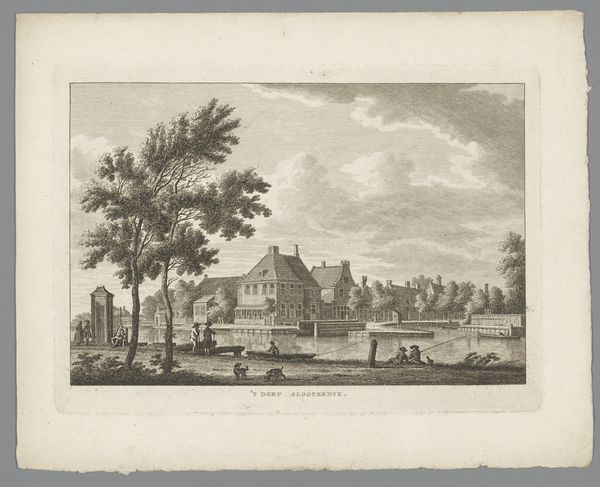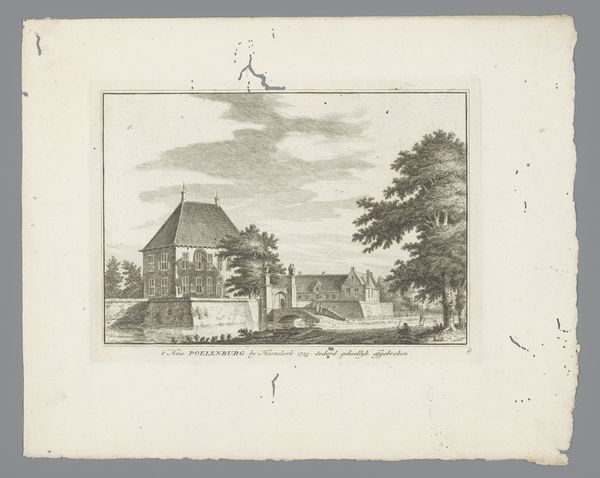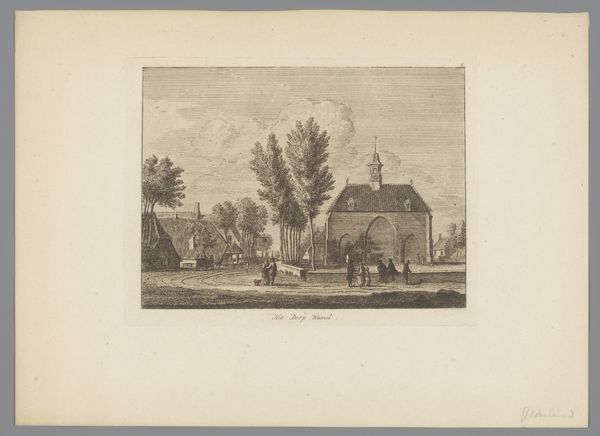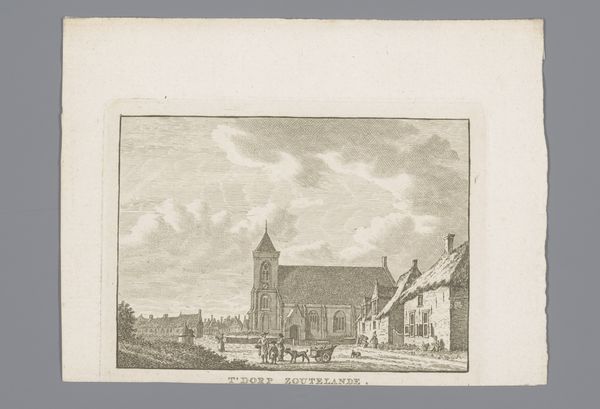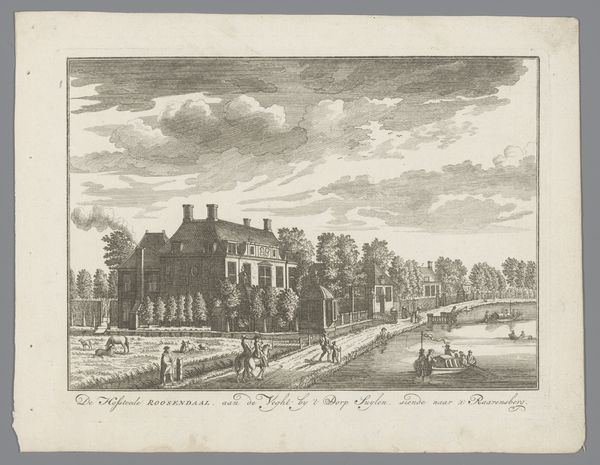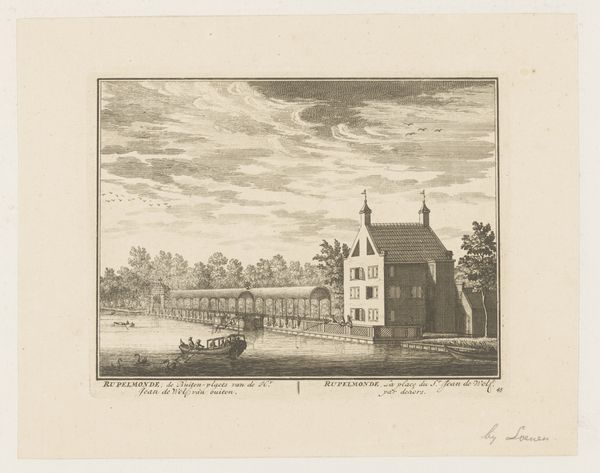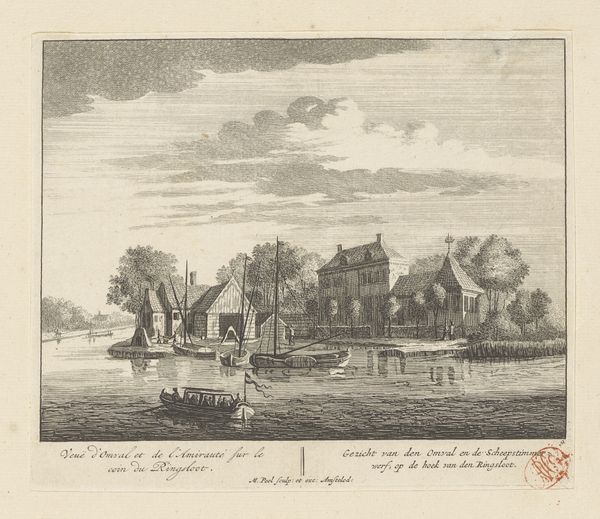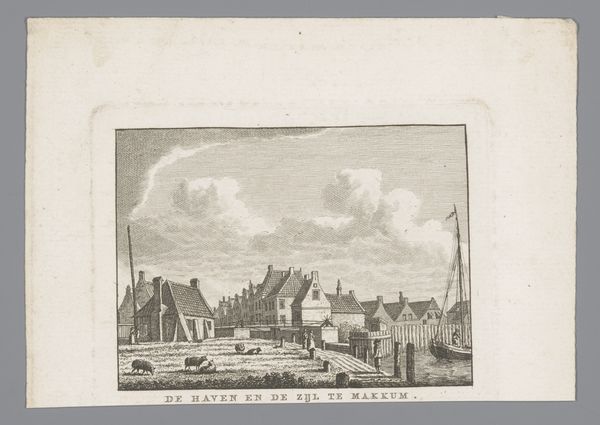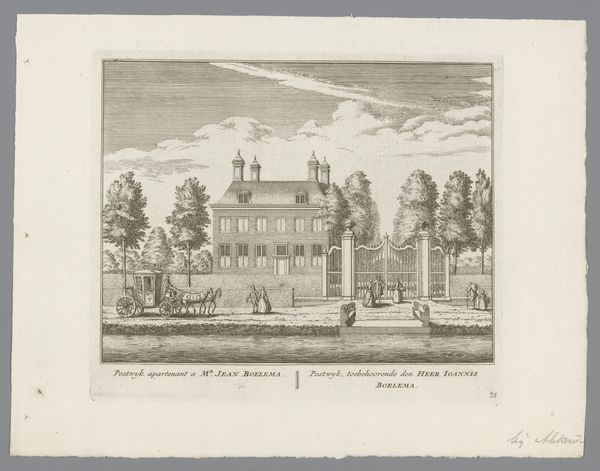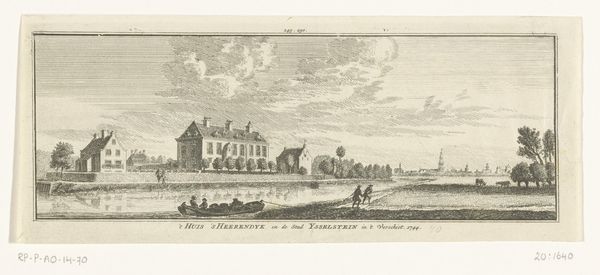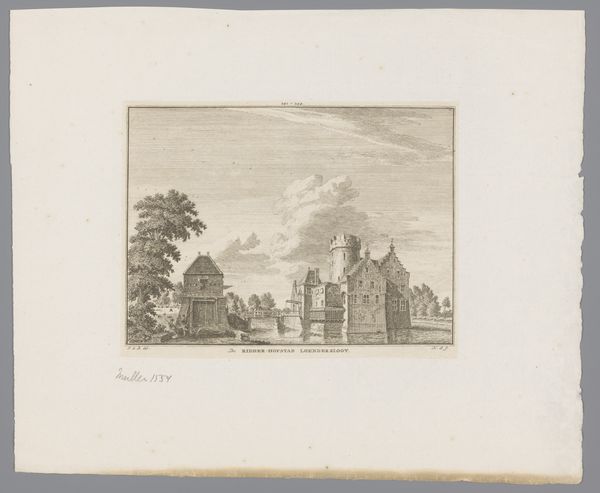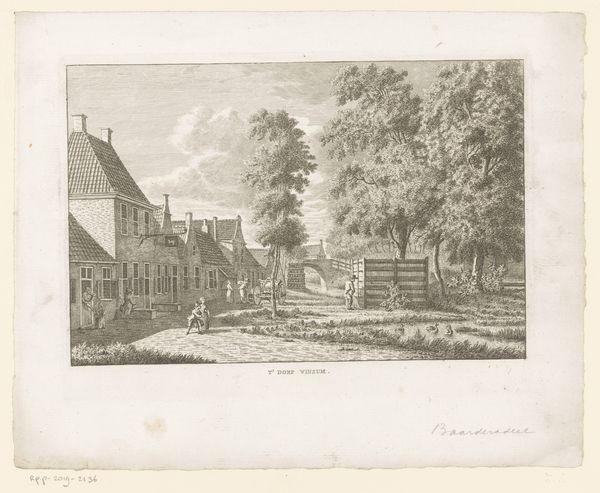
print, etching
#
neoclacissism
# print
#
etching
#
landscape
#
cityscape
Dimensions: height 175 mm, width 236 mm
Copyright: Rijks Museum: Open Domain
Editor: This is "Gezicht op het rechthuis in Kruiningen," or "View of the Courthouse in Kruiningen," an etching by Carel Frederik Bendorp from around 1790. There's such a calmness to this print; I'm curious to know more about its historical context. What do you see in this piece? Curator: Beyond its aesthetic qualities, it serves as a valuable record of social and institutional structures of the time. The courthouse wasn't just a building; it was a symbol of power and governance in a specific locality. Editor: So it represents more than just a building? Curator: Precisely! The architecture reflects prevailing tastes, likely influenced by neoclassicism, a style associated with reason and order. What’s interesting is how this seemingly neutral representation might actually reinforce the authority of the ruling class. Editor: In what way? Curator: Well, who is commissioning and consuming these images? Was this for public distribution, thus creating an image of just governance? These details influence how we interpret the piece’s function within society. Editor: That's a really insightful point. I never considered how the distribution would affect its meaning. Curator: These landscapes, seemingly innocent, participated in constructing a particular vision of Dutch society. And, the fact it’s a print – a medium allowing for wider distribution – changes the whole game. Considering these details transforms our appreciation of Bendorp’s work. Editor: I now see this print not just as a pretty landscape, but as a snapshot into the socio-political structure of the Dutch Republic at the time! Curator: Exactly! Art never exists in a vacuum; understanding its social and historical context adds depth to our experience.
Comments
No comments
Be the first to comment and join the conversation on the ultimate creative platform.
